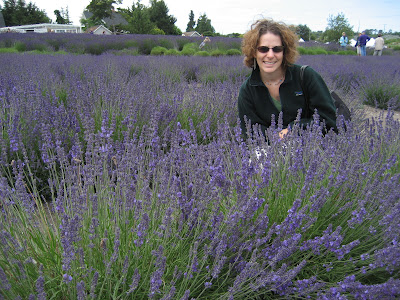
But for me, Antwerp is the center of all things Counter-Reformative in Belgium. Outside of Rome, it has great appeal for anyone interested in the propagandist nature of the Catholic revival of the late sixteenth- and early seventeenth-centuries. It was the site of the "Iconoclastic Fury" of 1566 when Protestant citizens swept through its cathedrals destroying their relics. In the following years it was torn between North and South, prompting the ruling Spanish to finally send in troops to slaughter thousands of its prominent citizens. And, yet, when most of the city's wealth was high-tailing it up to Amsterdam, enough people stayed that Antwerp continued its cultural growth. The print industry flourished here for decades into the seventeenth century, and Antwerp's "Golden Boy," Peter Paul Rubens, has left behind enough paintings, altars, and a well-preserved mansion to ensure the city's future as a tourist destination.
 Last Thursday I decided to take a break from the books and spend the day in Antwerp. My plan was a simple one: see two museums, visit one church, have coffee with a friend and dinner with another. And--much to my surprise and delight--for one of the first times attempting such a day in Flanders, it worked! My first stop was to the Museum Plantin-Moretus on the quiet Vrijdagmarkt. This wonderful old mansion was the home and workshop of sixteenth-century printer Christopher Plantin. On his death the business to his son-in-law, Jan Moretus, where it was to remain in the family until 1876. Today the mansion houses not only many fine prints from the workshop itself but also famous manuscripts that Plantin collected during his lifetime. The museum itself takes your through almost the entirety of the home. I was immediately entranced: the private rooms with well-preserved paintings and furniture pieces as well as the work rooms with original print machinery and Plantin's vast collection of letters, numbers, and copper plates. I am happy to say that I will be back several times to visit the museum's archives.
Last Thursday I decided to take a break from the books and spend the day in Antwerp. My plan was a simple one: see two museums, visit one church, have coffee with a friend and dinner with another. And--much to my surprise and delight--for one of the first times attempting such a day in Flanders, it worked! My first stop was to the Museum Plantin-Moretus on the quiet Vrijdagmarkt. This wonderful old mansion was the home and workshop of sixteenth-century printer Christopher Plantin. On his death the business to his son-in-law, Jan Moretus, where it was to remain in the family until 1876. Today the mansion houses not only many fine prints from the workshop itself but also famous manuscripts that Plantin collected during his lifetime. The museum itself takes your through almost the entirety of the home. I was immediately entranced: the private rooms with well-preserved paintings and furniture pieces as well as the work rooms with original print machinery and Plantin's vast collection of letters, numbers, and copper plates. I am happy to say that I will be back several times to visit the museum's archives.From Vrijdagmarkt I headed into the Antwerp's residential district, Het Zuid, and the Museum voor Schone Kunsten (Fine Art Museum.) Like most museums in Belgium, this one houses an extensive collection of Renaissance and Baroque art with only a smattering of more modern works. The highlight of the museum, of course, is the room dedicated to Rubens's massive paintings. As the court painter, Rubens was primarily responsible for proclaiming the good news of Catholicism in art. His paintings are colorful and dramatic. I am more interested in the earlier, more understated paintings. For me the best part of the museum was viewing an in-progress restoration of some works by Hans Memling.
 From Het Zuid I walked back into town to take a quick walk through St Carolus Borromeus, a famous Jesuit cathedral on Hendrik Conscienceplein. From there it was only a quick three-minute walk to Antwerp's great cafe district where I met a friend for a much-needed hot chocolate. I ended the evening with dinner with another friend, J, who was up from Brussels to work. He is a fellow Fulbrighter and perhaps the only American who is interested in Flemish Nationalism. Antwerp is the home of the infamous Vlaams Blok, a conservative right-wing political party that has increased in popularity in recent elections. We talked a great deal about his topic at dinner, mostly in hushed tones with some furtive glances all around. We ate at De Pelgrom, a wonderful little bistro located underground in a fifteenth-century wine cellar.
From Het Zuid I walked back into town to take a quick walk through St Carolus Borromeus, a famous Jesuit cathedral on Hendrik Conscienceplein. From there it was only a quick three-minute walk to Antwerp's great cafe district where I met a friend for a much-needed hot chocolate. I ended the evening with dinner with another friend, J, who was up from Brussels to work. He is a fellow Fulbrighter and perhaps the only American who is interested in Flemish Nationalism. Antwerp is the home of the infamous Vlaams Blok, a conservative right-wing political party that has increased in popularity in recent elections. We talked a great deal about his topic at dinner, mostly in hushed tones with some furtive glances all around. We ate at De Pelgrom, a wonderful little bistro located underground in a fifteenth-century wine cellar.

No comments:
Post a Comment